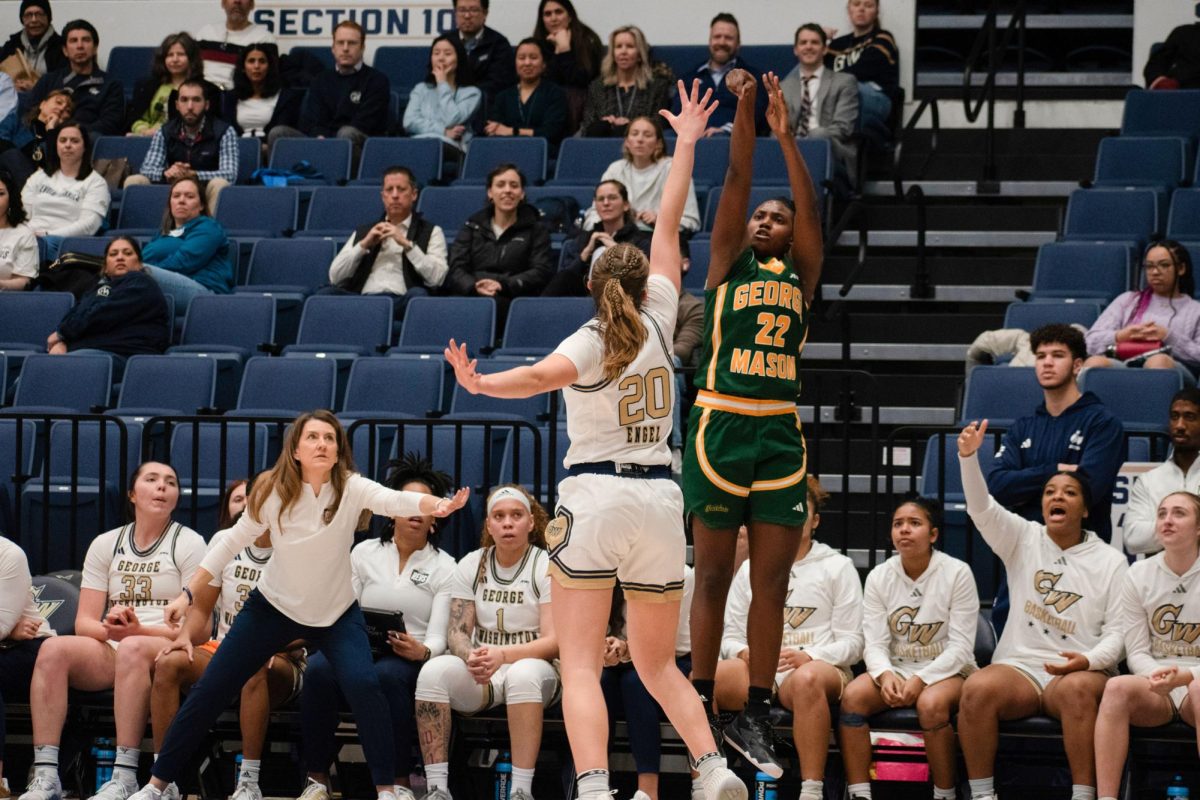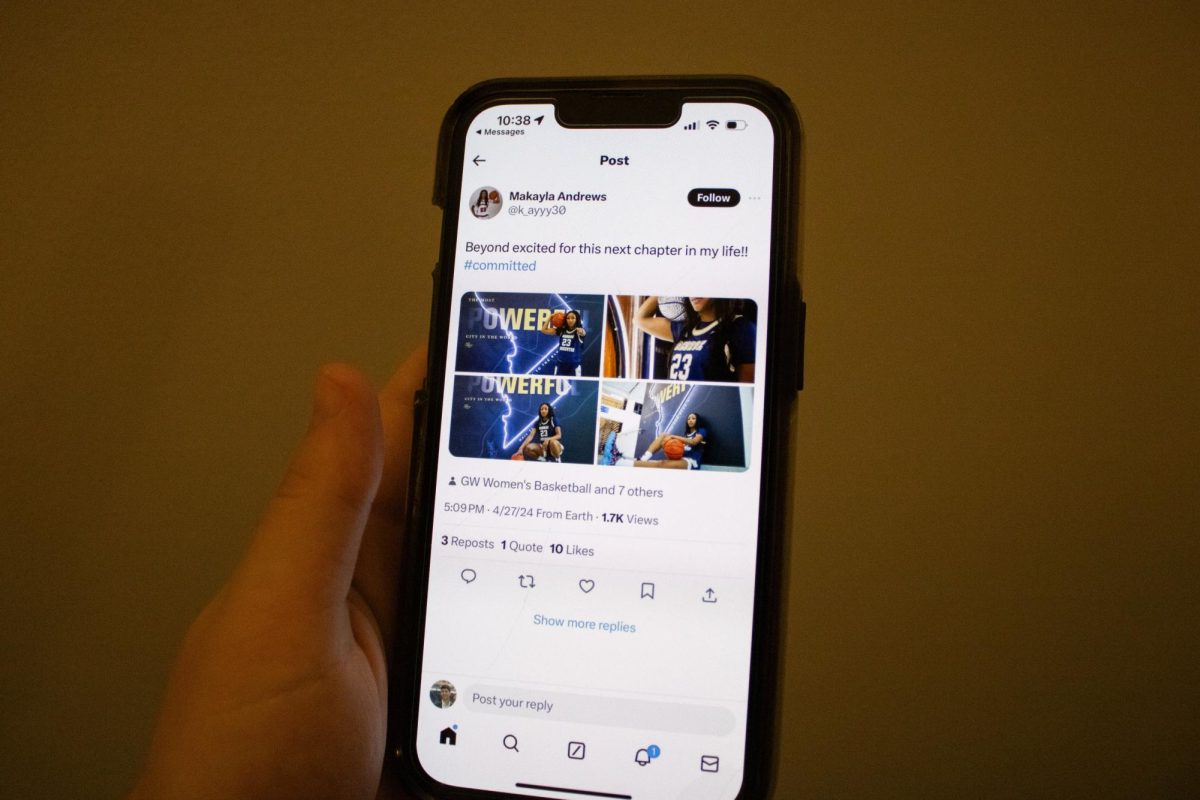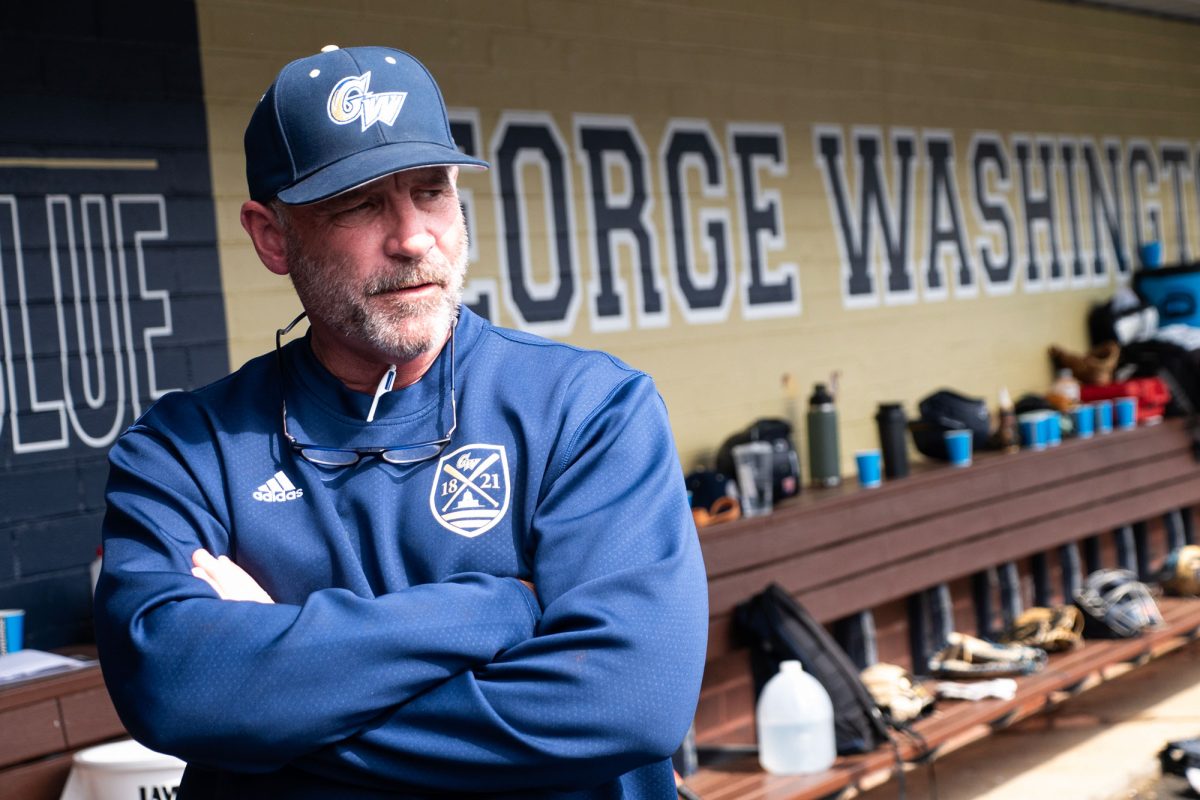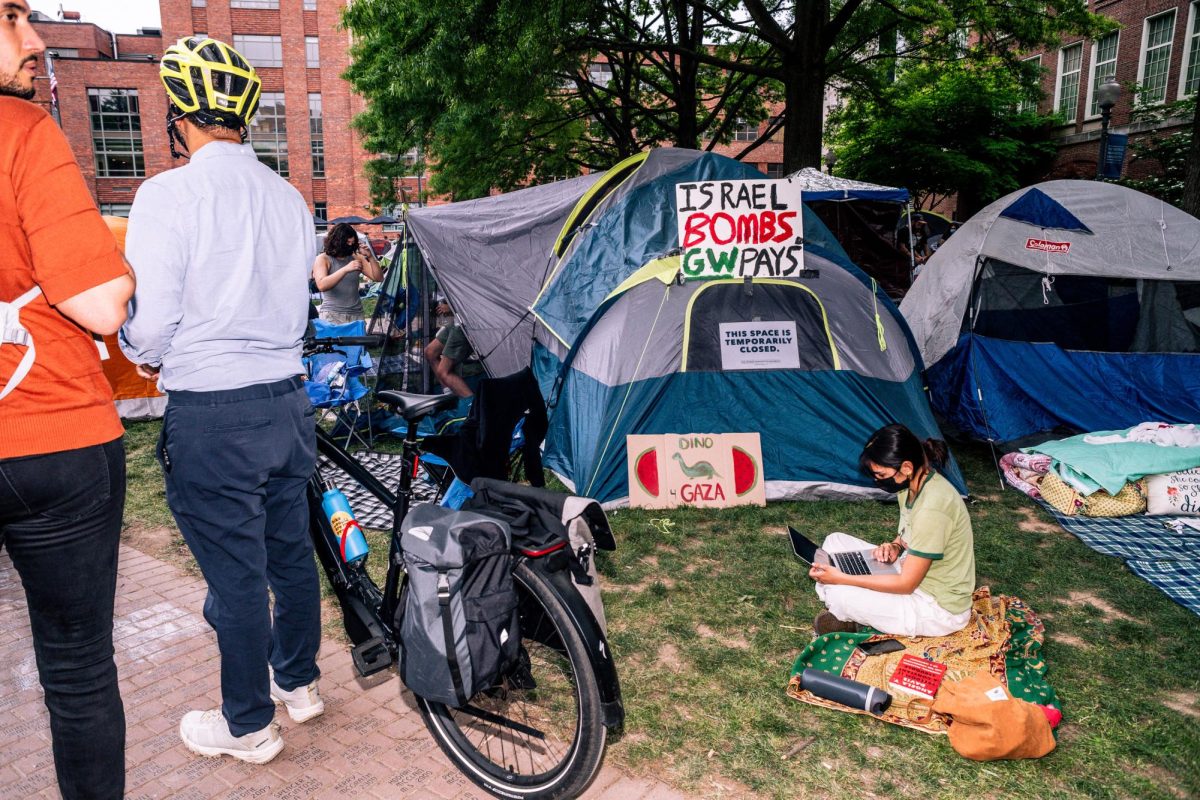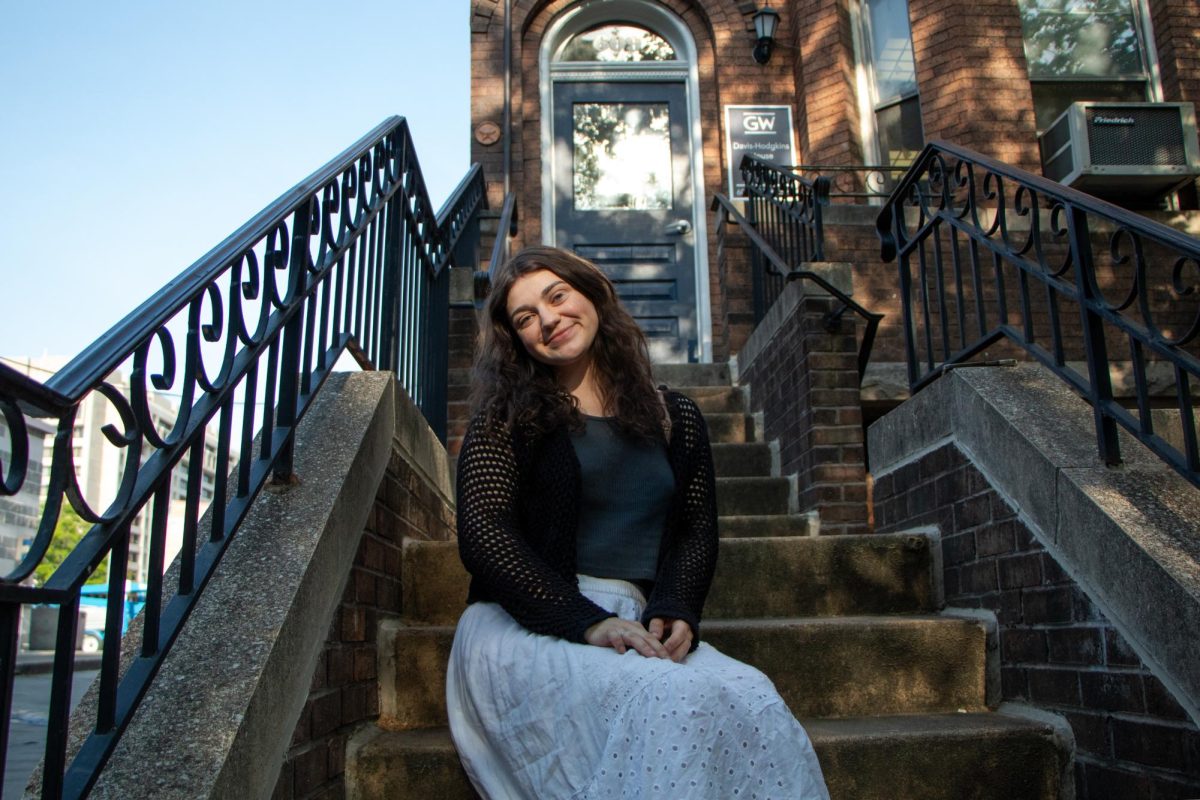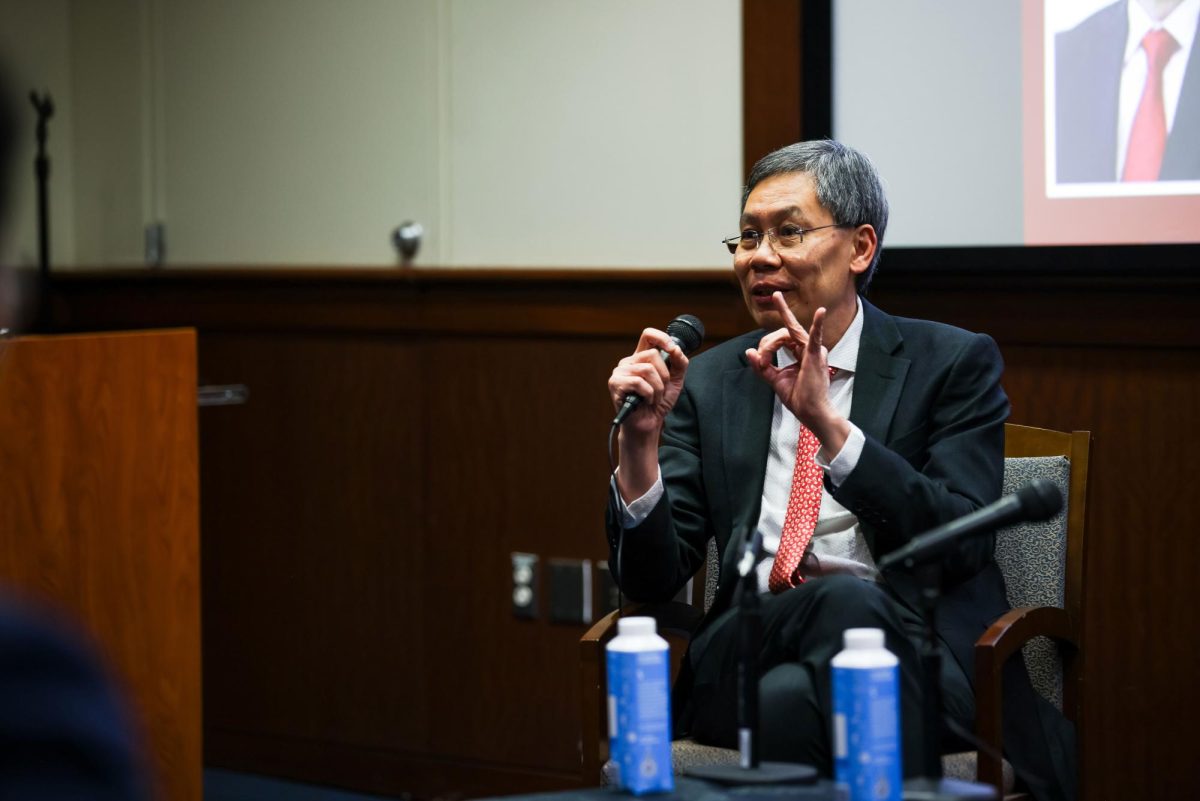First in a series of articles
GW men’s basketball enters its 85th season this year, coming off eight straight winning seasons.
So you might be thinking GW is a men’s basketball powerhouse. You might even be thinking the University of North Carolina is starting to look over its shoulder at the other boys in blue from the other Smith Center.
Let me remind you of what a conversation between a Tar Heel fan and a Colonials fan might sound like:
UNC Fan: We’ve been to 14 “Final Fours.”
GW Fan: “Final Four?” What’s that? Sounds scary.
UNC Fan: We’ve been to 25 straight NCAA Tournaments.
GW Fan: Well, we’ve been to postseason play for six straight years, including two NlTs.
UNC Fan: NIT? What’s that? Are you making that up?
You get the idea. But then again, don’t sell GW history short. Remember when Mike got drafted by the Chicago Bulls in 1985? (Hi, Tar Heels fan here – Now you’re just being silly. And besides, didn’t Jordan go in 1984?) Au contraire, my powder-blue friend, I speak of Mike Brown, dubbed “The New Washington Monument” during his four years at GW. (Touch? – OK, now I’m interested.)
Good, because a study of GW’s long tradition turns up some teams and names worth knowing, and I’ve rolled up my sleeves and delved into the University’s archives, the old Hatchets and the dusty Cherry Trees.
In the beginning .
It was 1906. George Washington University was only two years removed from being Columbian College. The school colors, buff and blue, were only 2 years old, as was The GW Hatchet.
When Columbian College was founded by Baptists in 1821, it sat atop College Hill, a plot of land that today is directly east of Meridian Hill Park (or Malcolm X Park). Just north of Boundary Street (now Florida Avenue), the little college rested just outside the city limits of Washington, D.C.
After the school grew into a university and moved to its new location (bounded by H, I, 13th and 14th streets) in the 1880s, it came to embrace not only the midtown life, but the game that called the city home – basketball.
James Naismith didn’t nail up his peach baskets until 1891, but GW had a varsity team in place by 1906. (At that rate, ultimate frisbee players would be asking for scholarships by now.) Basketball was spread through the YMCA, where GW played its first games.
January 1907 saw the first season of GW basketball. In eight games, the nine lettermen playing “basket-ball” took two of three from Georgetown University, thumped the University of Maryland 41-19 in the first intercollegiate game in the District, finished 6-2 and took the Southern Conference Championship. The team wore skintight jerseys, low-top sneakers and knee-high socks. All shorts had false belts, a peculiar style that would not fade until the late 1960s.
This initial success was immediately followed by years of futility. Between 1907 and 1927, five seasons were not even played and 10 of the rest were losing.
In 1912, GW began its move to Foggy Bottom (although no one at the time would admit GW to be in the swampy Foggy Bottom – they preferred the term “West End”). The new university centered around a little plot of land that would house Lisner Hall, home of the student union, and later, the library.
In 1924, an athletic practice facility was built just west of Stockton Hall, covering a quarter of the Quad, including the area where Lerner Hall now stands. This building came to be known as “The Tin Tabernacle.” GW’s use of G Street as its center led to decades of being called the “G-Streeters.”
During the early years, the game still was getting its footing and dealing with difficult issues such as whether to have a jump ball after every basket or whether basketball was spelled with a hyphen. Teams were referred to as “courtmen,” “cagers” or “cagemen” (after the steel fences that often surrounded city courts), “tossers,” “basketeers,” and always, “quints.” GW had its own nomenclature.
Teams were known as “The Buff and Blue,” “Lemonites” (after Coach James Lemon in the ’20s), “Crum-men” (after Maud Crum, coach of basketball and football in the late ’20s), and inexplicably, the favorite -“Hatchetites.” Whether the nickname inspired discussion among geology professors about whether a Hatchetite pointed up or down in a cave is unknown. What is known is the president of the University so hated these monikers that he demanded a better one be found. “Colonials” was adopted in 1928.
In the early days, coaches were not nearly as important as student managers, although this doesn’t excuse the fact that two of the first four coaches were former Georgetown players. As the 1930s dawned, GW already had a few natural rivalries. Georgetown, whom the Colonials played twice every season, was a given. The 1930 Cherry Tree yearbook, presumably alluding to the basketball team and not GW’s roots as a Baptist college, referred to Catholic University as the Colonials’ “ancient rival.”
The ’30s brought something new to GW besides chic wide-lapel warm-ups. The decade brought winning. With the help of GW’s greatest football player, “Tuffy ” Leemans (who would go on to glory with the New York Giants), GW compiled its sixth-straight winning season in 1934-’35. This success set the stage for the arrival of the man who would set GW standards that have yet to be beaten. In 1935, coach Bill Reinhart came to Foggy Bottom.
Reinhart’s winning ways
Reinhart excelled not only as a basketball coach, but also as a baseball and football coach. In fact, he quarterbacked the University of Oregon to the Rose Bowl in 1919. Lured by basketball coach and Athletic Director Jim Pixlee, Reinhart brought discipline to the program that quickly led to success and confidence.
The 1936-’37 team considered itself one of the best in the country, and indeed it was. The Associated Press poll did not begin until 1949, but modern basketball historian and St. Bonaventure professor Patrick Premo has ranked that 1936-’37 team, which went 16-4, the eighth-best team in the country that year. That would be the highest GW has ever finished in any rankings – ever. A basketball from that great team sits in the Smith Center trophy case today. The 1935-’36 team (16-3), Reinhart’s first, has been ranked 15th by Premo.
Bob Faris led the team in scoring in 1937-’38 and 1938-’39. In 1939-’40, senior captain Arnold “Red” Auerbach led the team in scoring, averaging 8.5 points per game. In 1939, senior Faris became GW’s first all-American by making the Converse All-American third team, which was selected by Chuck Taylor himself. (It should be noted that no Colonial has ever achieved any higher than Honorable Mention on the NCAA All-American Team.)
Faris would spend time coaching around the country, including a stint as backfield coach for the University of Nebraska football team. He would return to GW, though, and serve as athletic director, and, occasionally, as golf coach from 1955 to 1982. He still remembers his years as a player under Reinhart.
“We had strong teams,” Faris said. “Very defensive-minded, very ball-control minded. And we played all the big teams. We went to Madison Square Garden and played St. John’s and Long Island University, who was a power then. And we always took a long Christmas trip where we played several games in a row.”
Faris played during a time when the college game had different priorities.
“Well, basketball has changed completely,” he said. “And at that time, there were no rankings, no NCAA Tournaments – we just played it out.”
Faris had the unique opportunity to play with two great coaches. One was Reinhart, and the other still was wearing a uniform.
“Red was a typical New York player – all defense,” Faris said. “Reinhart was, of course, an outstanding coach.”
Faris and Auerbach graduated, and Reinhart left for the Navy in 1942. It was wartime, and if many young men felt they had no permanent home, they were not alone.
Neither did the Colonials.
GW had played at high schools, armories and at arenas such as the Coliseum and Riverside Stadium. Before a permanent home would finally be
built, the Colonials also would play home games at Uline Arena and Fort Myer.
In 1941-’42, GW joined the Southern Conference. The conference included all the teams now in the Atlantic Coast Conference. GW had previously played in another, older Southern Conference and, most recently, in the South Atlantic Conference.
Coach Arthur “Otts” Zahn took over in 1942-’43. He was a former player and coach of the freshman team (there was such a thing until the ’60s). In his first year, the Colonials went 17-6 and beat Duke University for the Southern Conference championship. A picture of this 1942-’43 team hangs in the Smith Center lobby. The victory was especially sweet since the next few years would bring little time for basketball. The GW Informals went 12-0 in 1943-’44, but World War II would shut down the varsity basketball program for the next two seasons.
On Monday, look for part two: The second coming of Bill Reinhart


